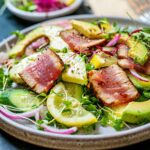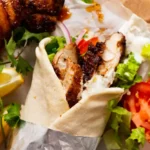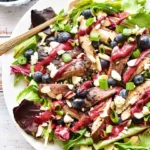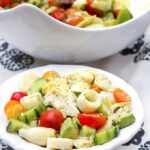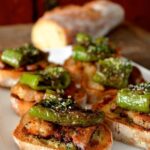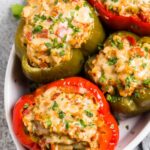Salvadoran cuisine is a blend of native and Spanish influences, offering a wide array of flavors and textures. From hearty main dishes to refreshing beverages, the food of El Salvador is rich in cultural heritage and diversity. The use of ingredients like corn, beans, rice, and various meats makes the cuisine both nutritious and flavorful.
Why explore Salvadoran cuisine? It provides a unique dining experience that reflects the country’s history and traditions. With an assortment of dishes that cater to different tastes, Salvadoran food has something for everyone.
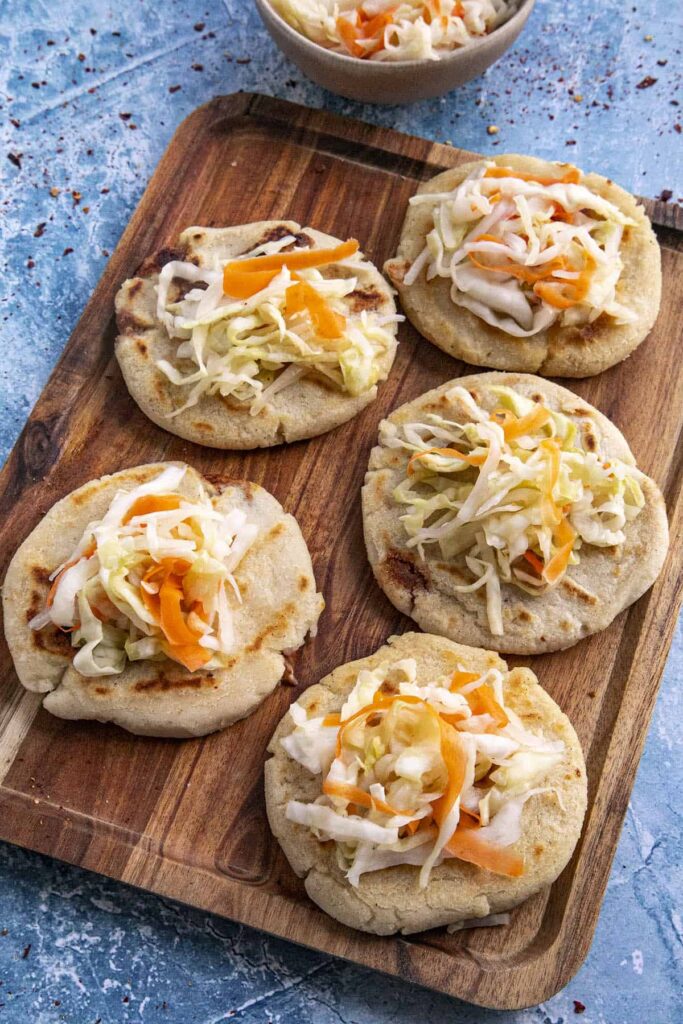
1) Pupusas
Pupusas are the national dish of El Salvador. They consist of a thick, hand-made tortilla made from corn or rice flour. These tortillas are stuffed with various fillings.
You can find pupusas filled with cheese, beans, chicharrón (cooked pork), or a mix of these ingredients. Cheese and refried beans are popular choices.
To make pupusas, you first create the dough by mixing harina de maíz (corn flour) with water. Once the dough is smooth, you form small balls and then flatten them.
After flattening the dough, you add the filling in the center. Then you shape the dough around the filling, ensuring it’s well sealed. Once sealed, you press it gently to form a flat disk.
Cooking pupusas is simple. You place them on a hot griddle and cook each side until golden brown. They should be soft on the inside with a slightly crispy exterior.
Traditionally, pupusas are served with curtido, a tangy cabbage slaw. Curtido is made by combining shredded cabbage, carrots, and onions with vinegar and oregano. This adds a refreshing contrast to the rich flavors of the pupusas.
Pupusas are enjoyed by both locals and visitors in El Salvador. You can find them in restaurants, street food stalls, and even as homemade meals.
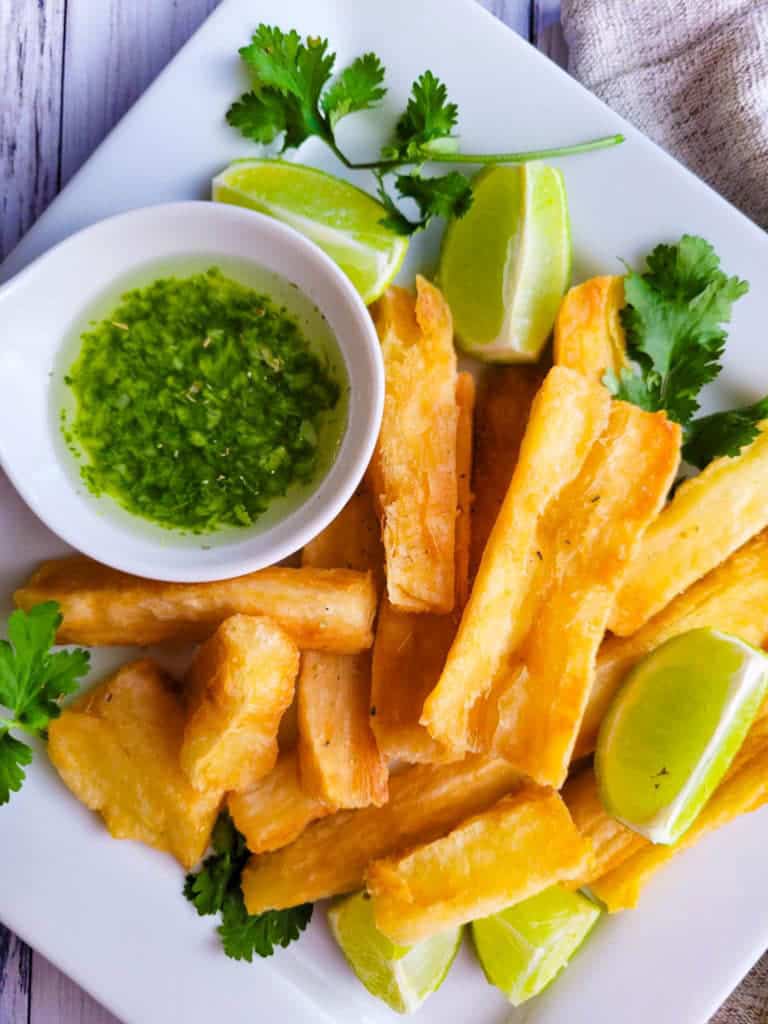
2) Yuca Frita
Yuca Frita is a staple in Salvadoran cuisine. It’s made from yuca, also known as cassava, which is a root vegetable.
To prepare Yuca Frita, you first peel and cut the yuca into thick sticks. You then boil the yuca in salted water until it becomes tender.
Once the yuca is cooked, you drain it and let it cool. After cooling, you fry the yuca in hot oil until it turns golden and crispy.
Yuca Frita is often served with a side of curtido, which is a pickled cabbage slaw. It’s also commonly paired with chicharrón, or fried pork rinds, for added crunch.
The dish is popular because of its simplicity and savory taste. Yuca has a mild flavor that complements many dishes. The crispy outside and soft inside make it a satisfying snack or side dish.
You can find Yuca Frita in many Salvadoran restaurants and street food stalls. It’s enjoyed by locals and visitors alike for its delicious taste and easy preparation. This dish highlights the flavorful and comforting nature of Salvadoran food.
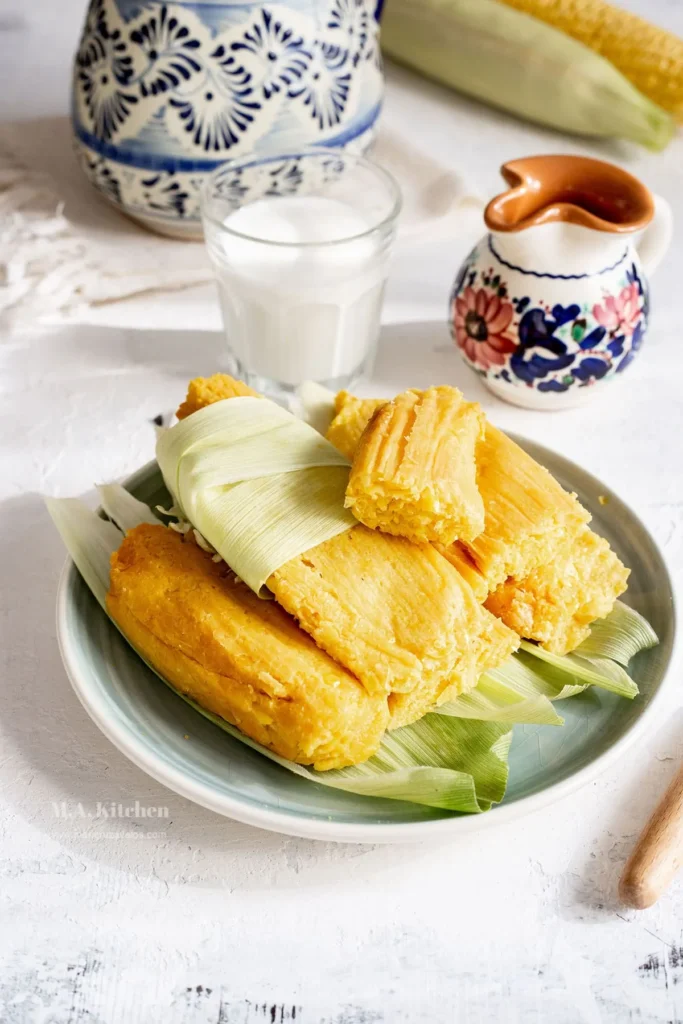
3) Tamales de Elote
Tamales de Elote, or corn tamales, are a beloved dish in Salvadoran cuisine.
These tamales are made from fresh corn, giving them a sweet and tender texture. To prepare them, you blend part of the corn until smooth, then mix it with whole kernels for a chunkier consistency.
Next, you mix the corn with cornmeal, sugar, melted butter, milk, salt, baking powder, and vanilla extract in a large bowl. This mixture forms the base of your tamales.
You then spread the mixture onto corn husks, fold them up, and steam them. The result is a delicious, soft tamale with a slightly sweet flavor.
Tamales de Elote are often enjoyed for breakfast or as a snack. They can be served with a variety of accompaniments, such as crema or cheese.
These tamales reflect the rich agricultural traditions of El Salvador, highlighting the importance of corn in the local diet.
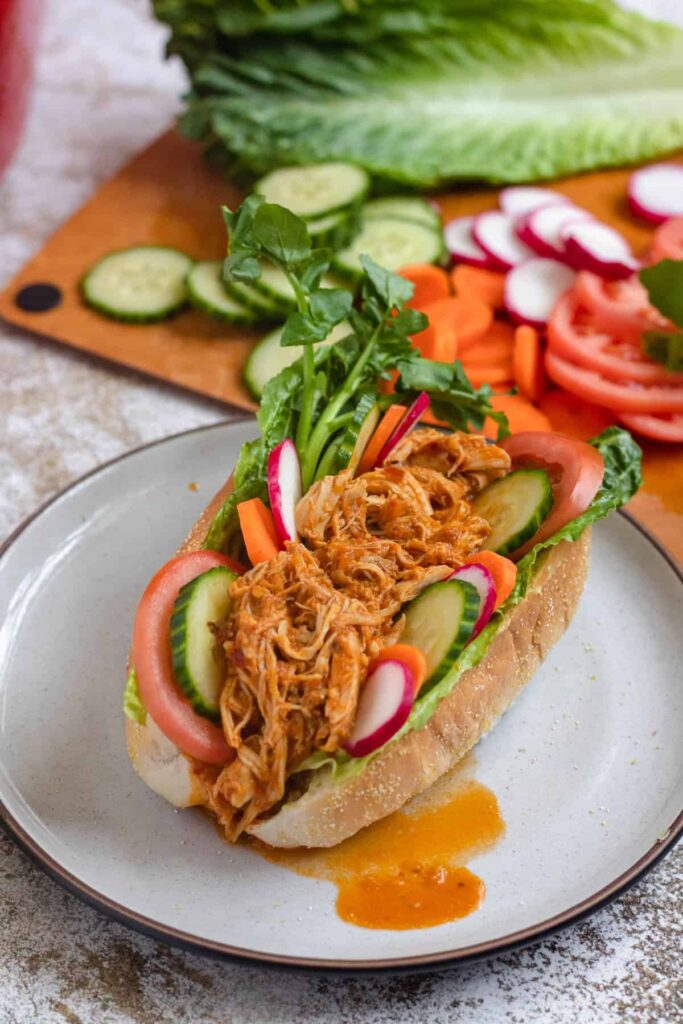
4) Pan con Pollo
Pan con Pollo is a popular Salvadoran chicken sandwich. It is made with marinated chicken, cooked with a rich sauce. The sandwich is served in a fresh bread roll with various toppings.
The chicken is seasoned with mustard, cumin, and pepper. Then it is browned in a pot with hot oil to get a crispy skin.
The sauce for Pan con Pollo combines tomatoes, onions, garlic, chilies, and spices. This mixture is blended until smooth and added to the chicken.
You also add bay leaves for extra flavor while the chicken simmers in the sauce. This process ensures that the chicken is tender and flavorful.
To assemble Pan con Pollo, slice brioche buns and toast them. Spread mayonnaise on the buns and layer the cooked chicken. Add lettuce, tomatoes, cucumber, and radishes for a crunchy texture.
This beloved Salvadoran dish offers a mix of savory and fresh flavors, perfect for any meal.
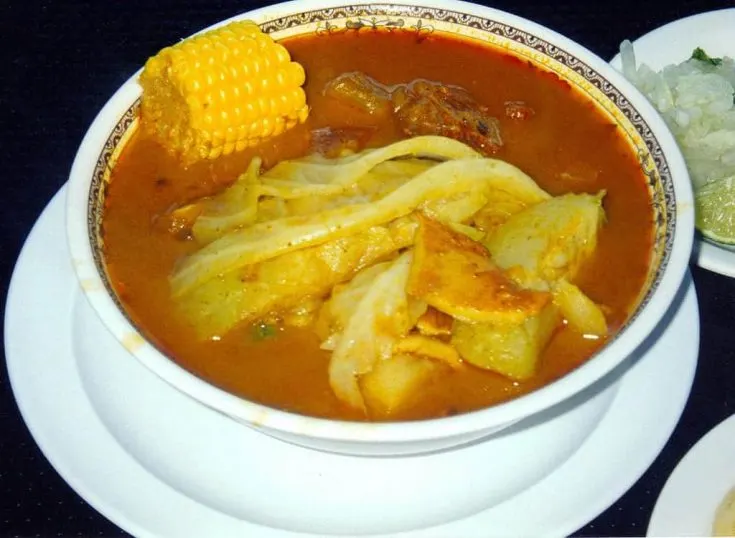
5) Sopa de Pata
Sopa de Pata is a rich Salvadoran soup made from cow’s feet and tripe. This traditional dish is known for its hearty and comforting qualities. It is often enjoyed during special occasions or family gatherings.
To prepare Sopa de Pata, you start by cleaning and cutting the cow’s feet and tripe into small pieces. These are then simmered with herbs and spices until tender. The slow cooking process helps to extract the flavorful broth.
Next, a sofrito is prepared by sautéing onions, bell peppers, garlic, tomatoes, and cilantro in a separate pan. This mixture is added to the pot along with vegetables like cassava, chayotes, corn, carrots, potatoes, and plantains. The combination of meats and vegetables makes the soup thick and nutritious.
Once all the ingredients are added, the soup is left to simmer for an additional 20 to 30 minutes until the vegetables are tender. Near the end, scallions are cut into julienne strips for decoration, and the seasoning is adjusted with salt and pepper.
Sopa de Pata is typically served piping hot. It is often accompanied by lime juice and Mexican cilantro, which enhance its flavors. This dish is a true representation of Salvadoran cuisine, showcasing the use of local ingredients and traditional cooking methods.
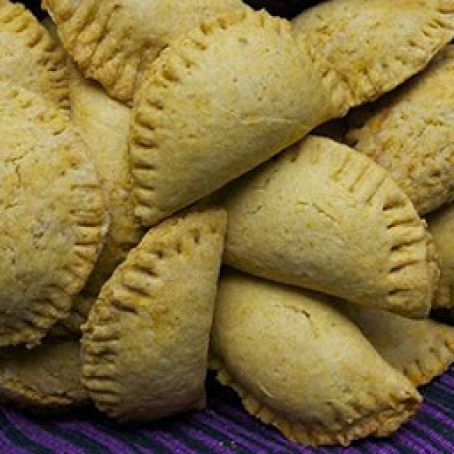
6) Empanadas de Leche
Empanadas de Leche are a sweet treat loved in El Salvador. These delicious empanadas are made from ground plantains and are filled with a rich, creamy custard made from milk.
First, ripe plantains are boiled until soft. Then they are mashed and formed into a dough. This dough is shaped into small, oval balls.
The milk filling, called leche poleada, is made by mixing milk, sugar, and vanilla. It is cooked until thick and creamy. This filling is then wrapped inside the plantain dough.
Once filled, the empanadas are fried until golden brown. They are usually served with a sprinkle of sugar on top.
Empanadas de Leche offer a unique mix of flavors and textures. The sweetness of the plantain pairs perfectly with the creamy, vanilla-flavored filling.
These empanadas are often enjoyed as a dessert or a special snack. In street markets and local bakeries in El Salvador, you can easily find this delightful treat.
If you love trying new desserts, Empanadas de Leche are a must-try. This traditional Salvadoran treat is sure to satisfy your sweet tooth.
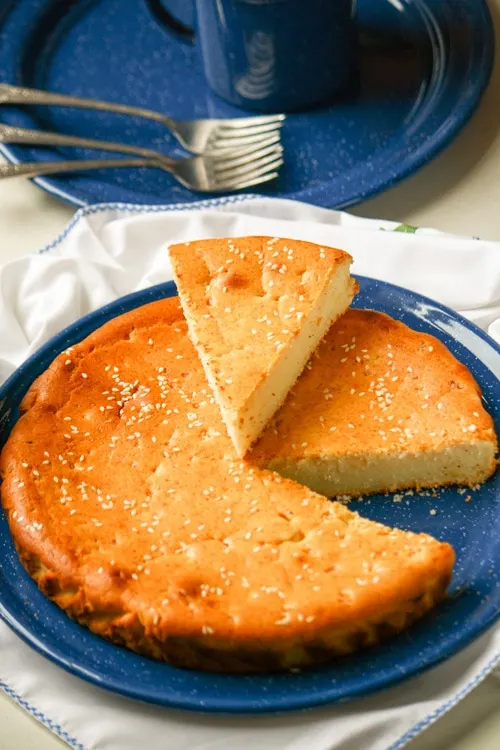
7) Quesadilla Salvadoreña
Quesadilla Salvadoreña is a sweet cheese bread from El Salvador. It’s different from the Mexican quesadilla, which is more like a savory tortilla filled with cheese.
You start by mixing flour, sugar, and melted butter. Then, add in sour cream and cheeses like queso fresco and cotija.
Separate the egg whites and yolks. Beat the egg whites until they form soft peaks, then mix them with the yolks. Add this mixture to the flour and cheese blend, ensuring everything is smooth.
Preheat your oven to about 350°F. Butter and lightly flour a baking dish. Pour the batter in and spread it evenly.
Bake for around 35-45 minutes or until golden brown. Enjoy it warm or at room temperature. This sweet treat is perfect for breakfast or an afternoon snack.
In El Salvador, it’s common to enjoy Quesadilla Salvadoreña with coffee. It’s a beloved traditional dish that brings a comforting taste of home.
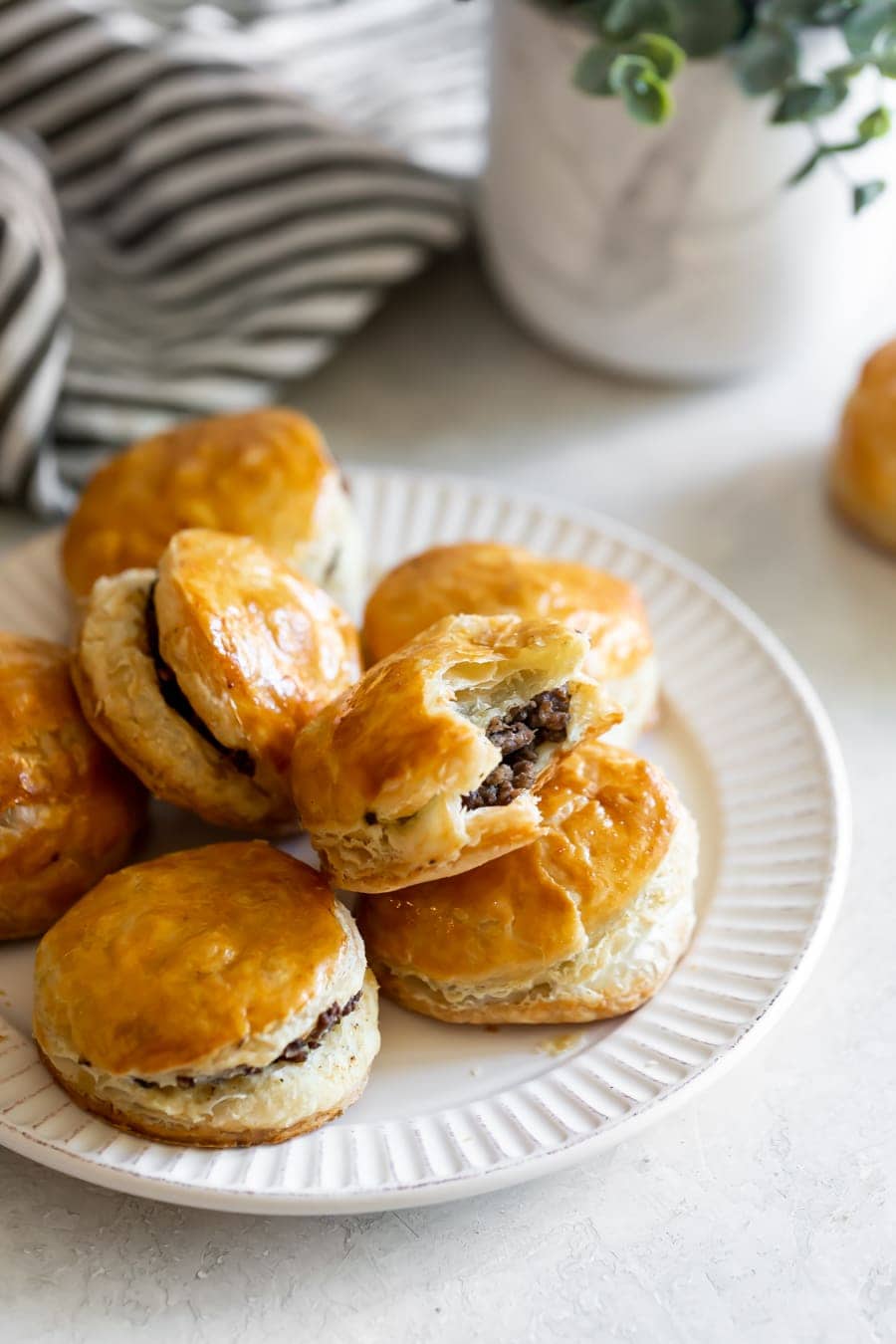
8) Pastelitos de Carne
Pastelitos de Carne are savory turnovers popular in Salvadoran cuisine. These little pockets are typically filled with ground beef and vegetables. The dough is made from corn masa, which gives them a distinct texture and flavor.
To make the filling, you start by cooking ground beef in a pan. Season it with spices like cumin, oregano, black pepper, and paprika. Once the beef is browned, add diced onions and green bell pepper until tender.
For the dough, combine corn masa, warm water, vegetable oil, and salt in a mixing bowl. Mix until it’s smooth and easy to handle. Divide the dough into small balls and flatten them with a rolling pin or tortilla press.
Take each flattened dough and place a spoonful of the meat filling in the center. Fold the dough over the filling to create a crescent shape. Seal the edges with your fingertips or a fork.
Heat oil in a pan to around 350°F (170°C). Fry the pastelitos in the hot oil until they are golden brown and crispy. Serve them hot, often paired with curtido, a tangy cabbage slaw.
These turnovers are a tasty and satisfying dish, perfect for any meal. They showcase the rich flavors and ingredients typical of Salvadoran cooking.
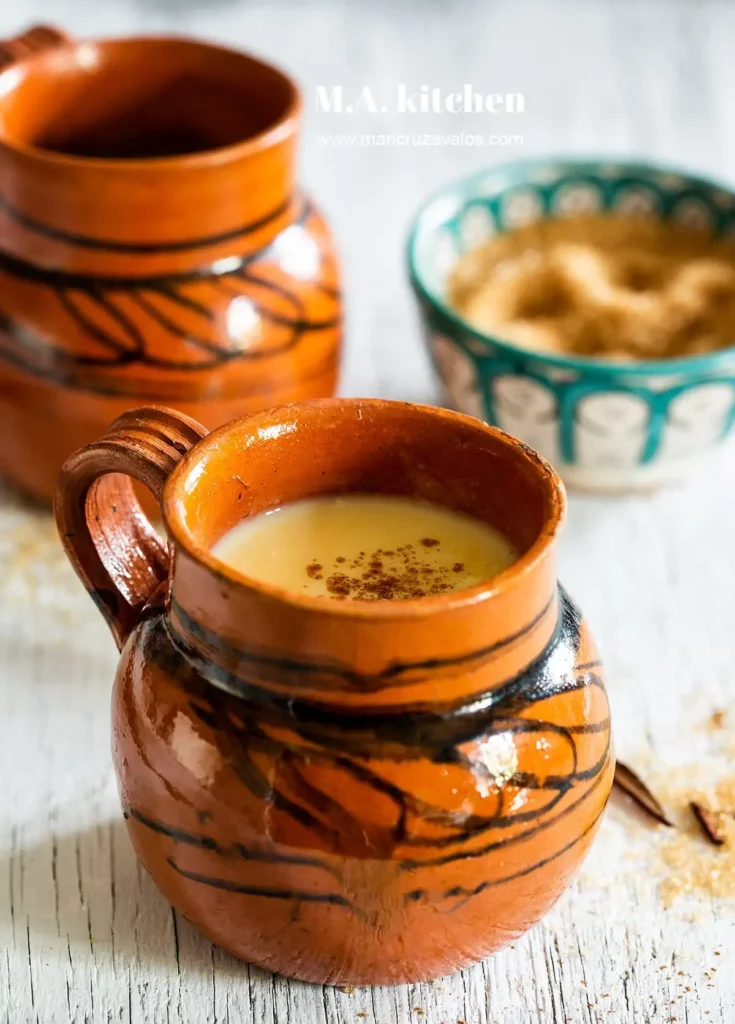
9) Atol de Elote
Atol de Elote is a traditional Salvadoran drink made from sweet corn. This creamy beverage is enjoyed by people of all ages. It’s often served at breakfast or as a dessert.
To prepare Atol de Elote, fresh corn kernels are blended with water until smooth. The corn mixture is then strained to remove any solids.
Next, the smooth corn liquid is heated in a pot with milk, sugar, and a cinnamon stick. You can adjust the sweetness to your taste by adding more or less sugar.
As it cooks, the mixture thickens into a creamy consistency. Once ready, it’s poured into cups and topped with a sprinkle of ground cinnamon.
Atol de Elote is best served warm. It’s comforting on cool mornings or evenings. The sweet and slightly spicy flavor makes it a unique treat.
This drink is an important part of Salvadoran cuisine and culture. It showcases the versatility of corn in Salvadoran cooking. Enjoy a cup of Atol de Elote to experience a taste of El Salvador’s culinary tradition.
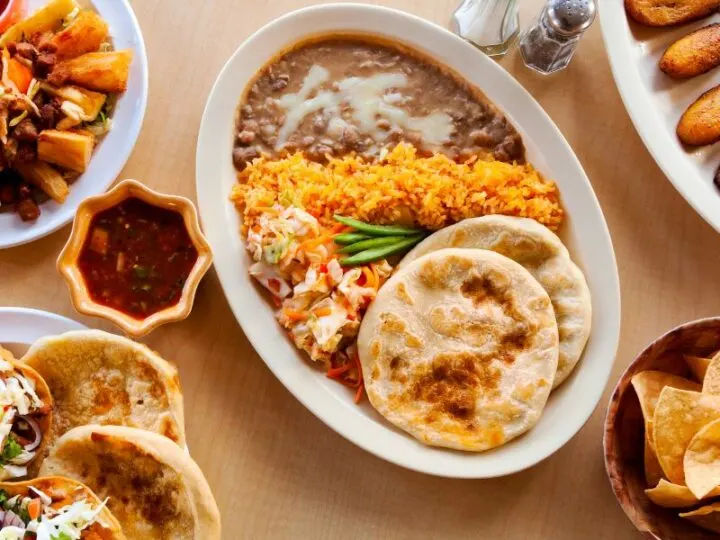
10) Riguas
Riguas are a traditional Salvadoran dish made from fresh corn. These tasty treats are often cooked on banana leaves, which add a unique flavor and aroma.
To make riguas, you mix fresh corn kernels with sugar, salt, and sometimes cheese. The mixture is then placed onto banana leaves and cooked on a griddle or skillet.
You can customize your riguas by adding different ingredients like mozzarella or fresh cheese. They are usually cooked until they have a golden-brown crust and are slightly charred.
Riguas are often served hot. They can be enjoyed on their own or paired with traditional sides like curtido (cabbage slaw) and salsa roja (red salsa). These additions bring out the rich flavors of the corn patties.
Making riguas at home is a great way to explore Salvadoran cuisine. It’s a simple yet flavorful dish that showcases the staple ingredients of Salvadoran cooking.
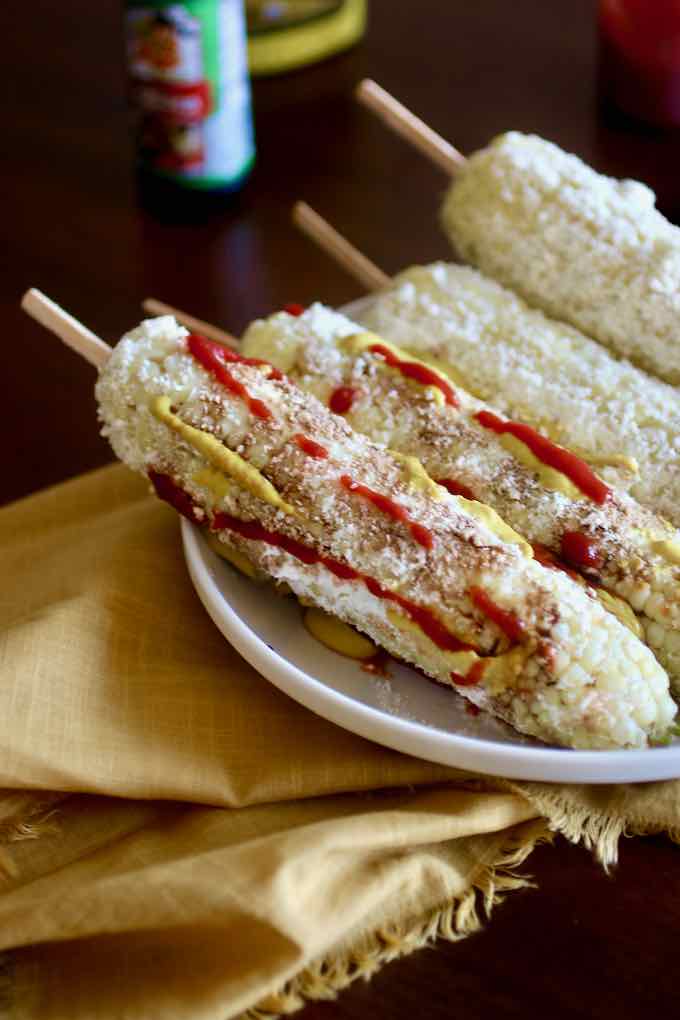
11) Elote Loco
Elote Loco, or “crazy corn,” is a popular street food in El Salvador. You start by grilling or boiling fresh ears of corn until they are tender. This corn is then skewered with a stick to make it easier to handle.
Once the corn is cooked, you coat it with a layer of mayonnaise. Following that, you add crumbled cotija cheese, giving it a rich and salty flavor.
Next, the corn is sprinkled with chili powder for some heat. To balance the flavors, a touch of lime juice is often added. Mustard, ketchup, and sometimes salsa negra are drizzled on top.
Elote Loco is both messy and delicious. It’s a perfect example of how a few simple ingredients can transform a basic food item into something extraordinary. You’ll often find it served by street vendors, especially during festivals. Enjoy it hot and fresh for the best experience.
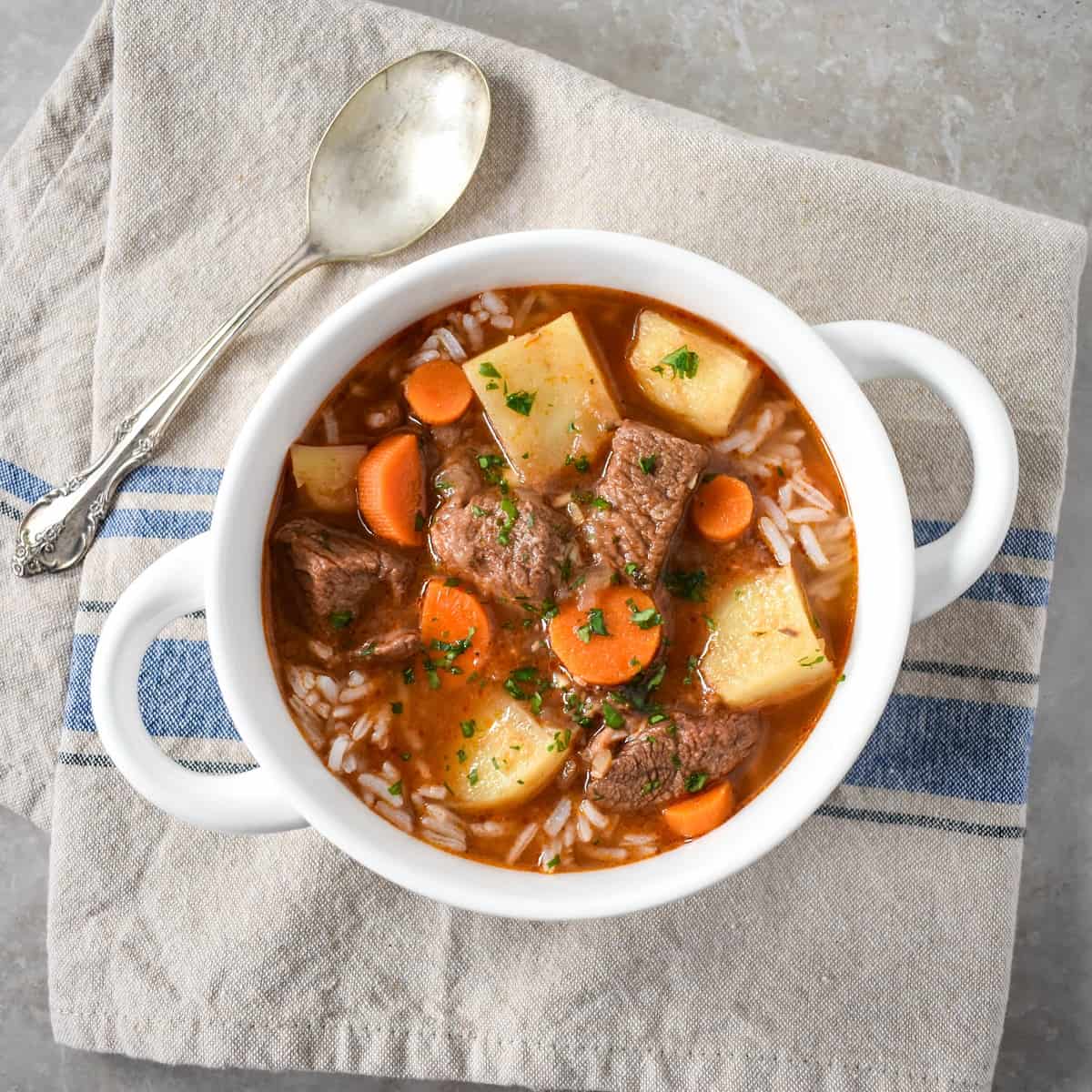
12) Sopa de Res
Sopa de Res is a traditional Salvadoran beef soup. It features tender beef shanks, a variety of vegetables, and flavorful herbs. This hearty dish is often enjoyed as a comforting lunch or dinner.
To make Sopa de Res, you start by boiling beef shank in a large pot of water. This forms the base of the soup and provides rich flavors. Skim off any foam that accumulates on the surface to keep the broth clear.
Once the beef is tender, you add vegetables like chayote, cassava, carrots, and plantains. These vegetables not only add taste but also make the soup nutritious. Herbs such as cilantro and spices like garlic and onions enhance the flavor.
Serve Sopa de Res with lime wedges on the side for an extra tangy touch. You might also see it accompanied by rice or tortillas. It’s a meal that brings warmth and comfort to any table.
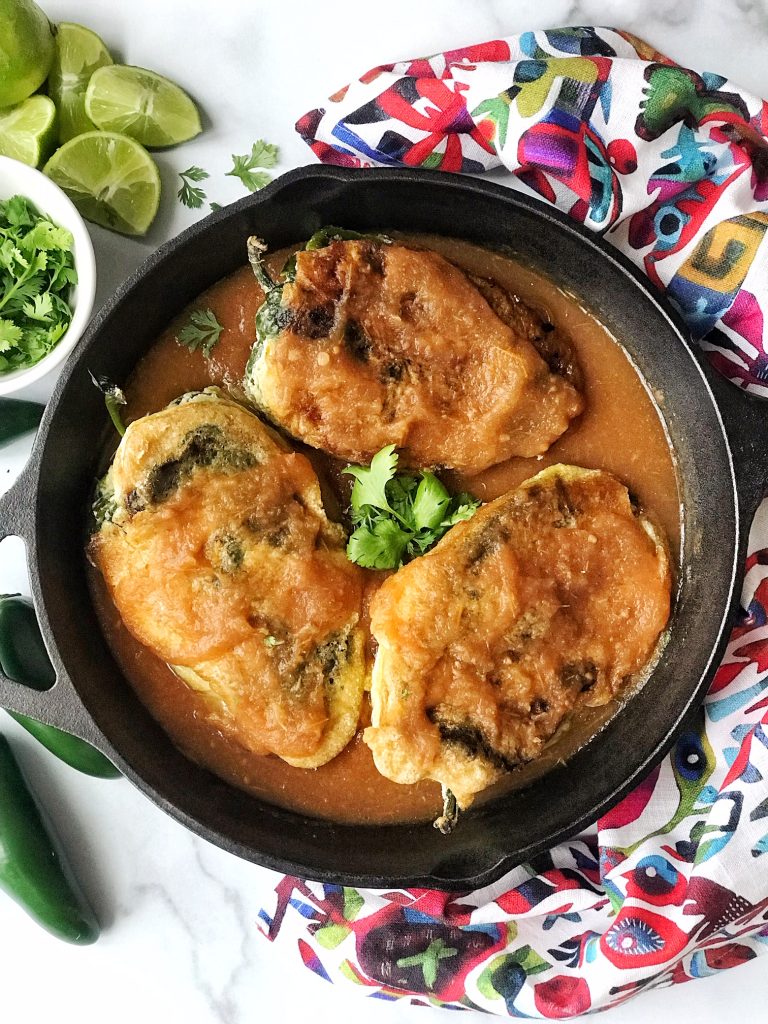
13) Chiles Rellenos
Chiles Rellenos are a popular dish in Salvadoran cuisine. They consist of bell peppers stuffed with a savory mixture. Typically, the stuffing includes ground meat like beef or pork.
To start, you need to prepare the filling. Cook ground meat with onions, carrots, potatoes, and green beans. Season the mixture with salt and pepper.
Once the filling cools down, stuff the bell peppers with it. If you’d like, you can add some shredded cheese inside as well. Mozzarella or Salvadoran quesillo works well.
Next, you prepare the batter. Separate egg whites and beat them until stiff peaks form. Fold in the yolks gently. Dip each stuffed pepper into flour, then coat it in the egg batter.
Heat oil in a pan over medium heat. Fry the battered peppers until golden brown. Place them on paper towels to drain excess oil.
Serve your Chiles Rellenos hot, often with tomato sauce or salsa on top. These stuffed peppers are a delicious and hearty part of Salvadoran cuisine.
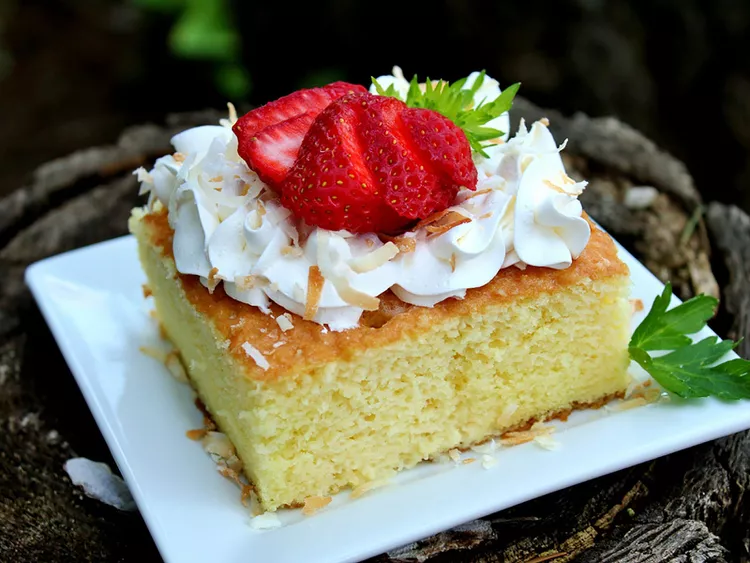
14) Pastel de Tres Leches
Pastel de Tres Leches is a cherished dessert in Salvadoran cuisine. This cake is soaked in a mixture of three types of milk: condensed milk, evaporated milk, and heavy cream.
To start, you bake a simple sponge cake. Once done, you let it cool slightly before poking small holes across the surface. These holes help the milk mixture seep into the cake, making it moist and flavorful.
Next, you pour the milk mixture over the cake slowly. This lets the cake absorb all the flavors. The result is a rich, creamy texture that’s hard to resist.
Pastel de Tres Leches is often topped with whipped cream. Some like to add fresh fruit or cinnamon for extra flavor.
This dessert is extremely popular not just in El Salvador but across Latin America. Its delightful taste and creamy texture make it a favorite for many.
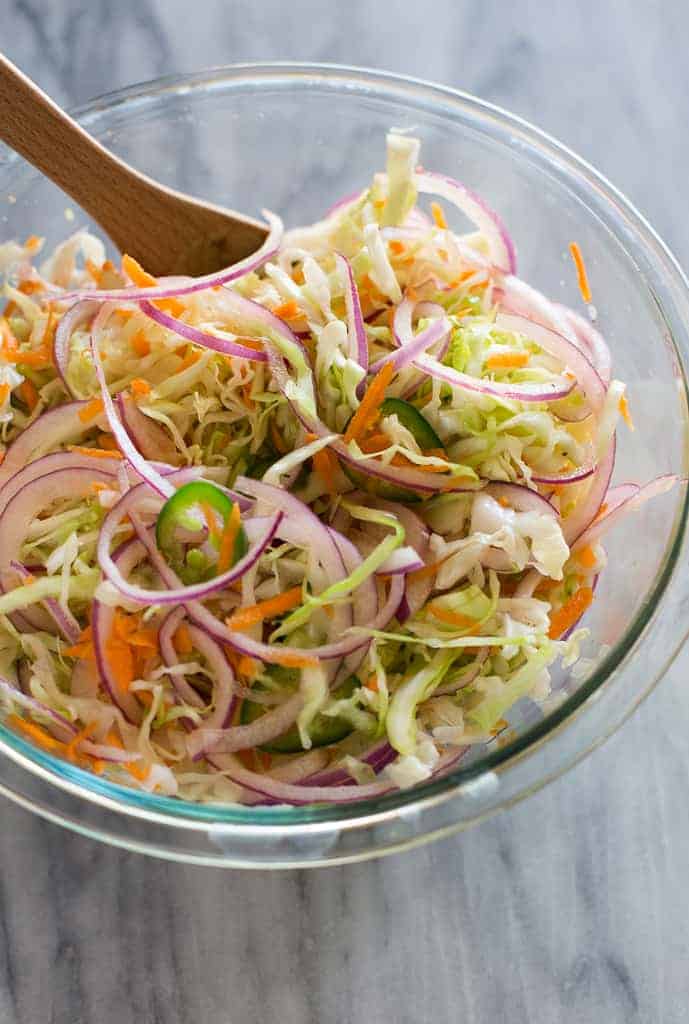
15) Curtido
Curtido is a traditional Salvadoran side dish often served with pupusas. It’s a type of pickled cabbage slaw that’s tangy, crunchy, and slightly spicy. This dish is crucial in Salvadoran cuisine for its bold flavors and versatility.
You start by shredding cabbage finely and peeling and grating carrots. Thinly slice onions and, if desired, add some jalapeños for a kick. These ingredients create a colorful and flavorful mixture.
Once your vegetables are prepped, you’ll pour boiling water over them. This step softens the cabbage slightly without losing its crunch. After a quick rinse with cold water, drain and press out excess water.
Next, prepare the pickling mixture. Mix vinegar, water, sugar, oregano, and salt in a bowl until the sugar and salt dissolve. Toss this mixture with the vegetables to coat them evenly.
Let the curtido sit for at least a few hours, or even overnight, to develop its flavors. You can store it in the refrigerator for several days. This makes it easy to always have some on hand to enhance your meals.
Historical Background of Salvadoran Cuisine
Salvadoran cuisine is a rich tapestry woven from various cultural influences. Key elements include the foundations laid by indigenous groups and transformations brought about by Spanish colonizers.
Pre-Columbian Influences
Before the arrival of Europeans, El Salvador was home to indigenous groups like the Lenca, Pipil, and Maya. Their diet was heavily reliant on maize (corn), which remains central to Salvadoran dishes today. Beans, squash, and chili peppers were also staples. They employed cooking methods such as roasting, boiling, and steaming using tools like clay pots and stone hearths.
Techniques and ingredients from these groups are still evident. For example, the famous pupusa, a thick tortilla filled with cheese, beans, or meat, has origins tracing back to these early civilizations. Likewise, tamales, another staple, show the deep-rooted tradition of utilizing corn as a base ingredient.
Spanish Colonial Impact
The Spanish colonization of El Salvador began in the early 16th century and greatly influenced local food. With the Spanish came new ingredients such as pork, beef, and dairy products. They also introduced spices and cooking methods that were previously unknown to the indigenous people.
One significant change was the incorporation of animal fats like lard, replacing some of the plant oils previously used. The convergence of Spanish and indigenous culinary practices gave rise to complex dishes like yuca frita (fried cassava) served with curtido (pickled cabbage slaw). Seafood also became more prominent, especially in coastal regions, integrating European flavors with local finds.
By blending these elements, Salvadoran cuisine evolved into the unique and flavorful tradition you see today.
Ingredient Staples in Salvadoran Cooking
In Salvadoran cuisine, certain ingredients stand out for their frequent use and cultural significance. Corn, maize, and local herbs and spices play critical roles in many traditional dishes.
Corn and Maize
Corn is a cornerstone of Salvadoran cooking. It’s often ground into masa to make pupusas, a beloved stuffed tortilla. Corn dough, mixed with achiote, is used to prepare enchiladas. Both items are staples in many households.
Maize is also used in hearty soups like Sopa de Pescado. The dough can be boiled, grilled, or fried, offering a versatile base for various meals.
From street vendors to family kitchens, corn and maize appear in numerous forms, making them essential in both everyday and festive foods.
Local Herbs and Spices
Salvadoran dishes are rich in flavor, thanks to a variety of local herbs and spices. Achiote powder, often added to corn dough, gives Salvadoran enchiladas their unique color and taste.
Cumin, oregano, and cilantro are commonly used in soups and stews, like Sopa de Pescado. They enhance the flavors of meat and vegetable dishes.
Chili peppers offer a mild heat and are frequently used in sauces and marinades. Alongside these, sesame seeds and morro seeds feature in traditional drinks like horchata, amplifying the Salvadoran food experience.
Cooking Methods in Salvadoran Cuisine
Salvadoran cuisine blends indigenous and Spanish influences, using various cooking methods to create distinct and flavorful dishes. Key techniques include traditional methods such as grilling and clay pot cooking, as well as modern adaptations to traditional recipes.
Traditional Cooking Techniques
Traditional Salvadoran cooking techniques often use a mix of native and Spanish methods. Grilling is a popular method, especially for meats and street foods like elote loco (grilled corn). Clay pot cooking is another essential technique. These pots, known as ollas, impart a unique earthy flavor to dishes, such as soups and beans.
Wood-fired ovens are used to bake tortillas, pupusas, and bread. The smokiness adds depth to the food. Steaming is also common, especially for tamales, which are wrapped in banana leaves and cooked slowly to retain moisture and flavor. Boiling is used for soups and stews, bringing together various ingredients in rich broths.
Modern Adaptations
Modern Salvadoran cuisine has adapted to incorporate new technologies and ingredients. Electric and gas stoves have largely replaced traditional wood-fired methods for convenience. Slow cookers and pressure cookers are now used to prepare stews and beans faster while maintaining flavor. This is particularly useful for busy households.
Some dishes are now baked instead of fried to make them healthier, without losing the traditional taste. For instance, baked pupusas are an alternative for those wanting less oil. Microwaves are used for quick meal prep, especially reheating leftovers like curtido (pickled cabbage). These adaptations allow you to enjoy the rich flavors of Salvadoran cuisine with more ease and efficiency.
